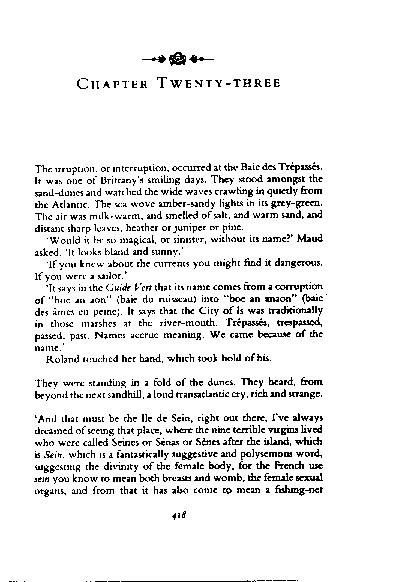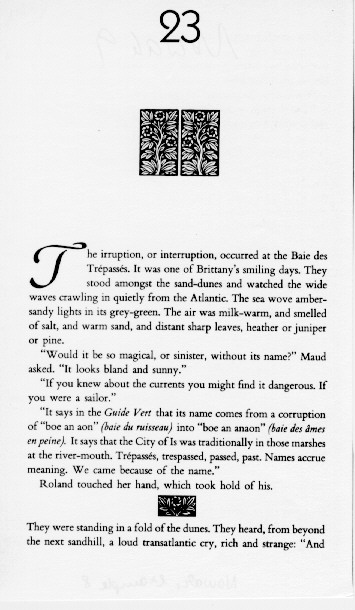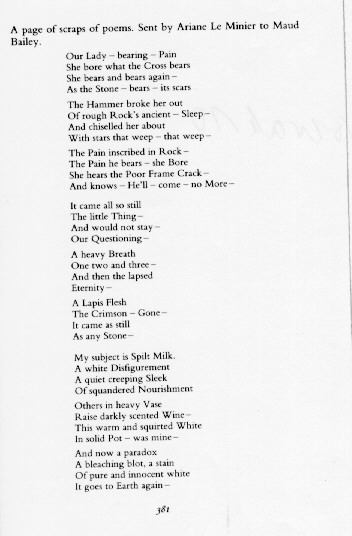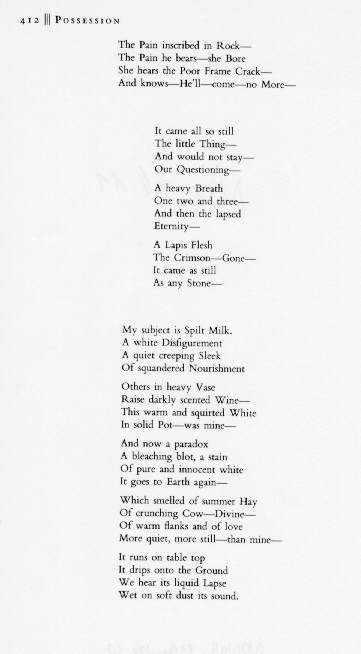
US paperback edition, p. 452

British paperback edition, p. 381

US hardback edition, p. 412

Segmentation
Direct speech, introduced by a half-sentence, has usually been incorporated into the preceding paragraph. Only a few empty-line divisions have been kept as such (and those only in the second half of the text).12 Others that have been kept received further visual emphasis by additional vignettes. Yet most of them have been scrapped completely, while new paragraphs, on the other hand, have been inserted only occasionally.13 The result is a presentation of the text that cuts down on the segmentation of the narrative, which is usually restricted to changes of location or focalisation,14 similar to the division of a play into scenes. The divisions kept are not only much fewer in number, but also made more prominent, and as the vignettes added for this purpose resemble those used for the chapter headings, the segmentation on the whole is made much more accessible, visually. This applies, too, for the way the "scraps of poems" at the end of chapter 19 are distinguished from one another. (For comparison, see examples 8 to 11.)




Notes
12 Cf. A353-54, 369-94, 416, 453-67, 484-502, 512-514, 527, 541.
13 Cf. A38/B33, A164/B148, A176/B160, A515/B474.
14 Gérard Genette's term for, roughly speaking, how and how much information is presented to the reader (1983: chap. 12).